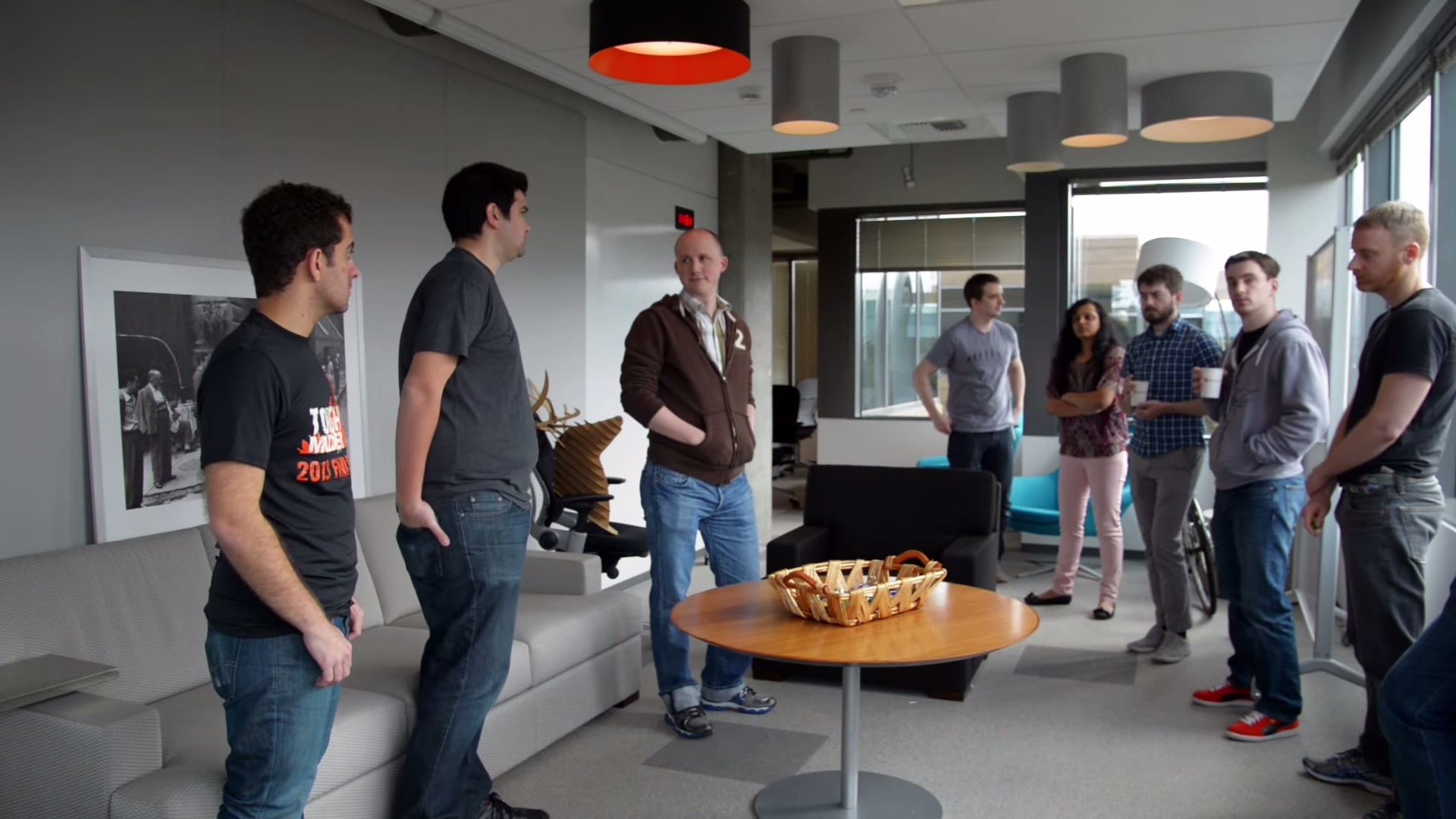The following is a guest post by Darren Chait, Co-Founder at Hugo. Hugo is the meeting note platform that keeps your team connected with what your customers are thinking and saying. It enables fast-moving teams to make meeting insights shareable and actionable in their existing tools.

As a startup guy, my world is full of buzzwords. We’re disrupting a space, have pivoted, got our minimum valuable product (MVP) out to our total addressable market (TAM) and even had a ‘.ai’ domain name. Undoubtedly, one of my ‘favorites’ is ‘team alignment’.
While team alignment is not a new concept and certainly not unique to fast-growing technology businesses, I’m fascinated with my peers’ obsession with this utopian concept. It’s understandable. Why wouldn’t you want your team moving forward in unison with precise coordination and execution? Why wouldn’t you listen when experts warn that misalignment kills startups?
In this guest post, I’ll share our story and perspective on team alignment and some easy-to-implement solutions to achieve this ideal state with your team.
Our story
My co-founder and I are typical first-time founders. We’re ambitious entrepreneurs based in San Francisco, obsessed with a pain point experienced in our prior lives, a pain point that we’re fixated on solving by building a SaaS business. Sound familiar?
We started like every other founder. We left our jobs, whiteboarded around the clock, hired engineers, enlisted our friends and family as early customers, and waited to see our new app go viral.
Guess what? It didn’t. Even though we had a great looking product, a good sized, highly skilled team, and an app that was solving the pain point we had personally experienced before starting the business, traction was slow. So we kept moving forward. Building faster, designing more features, and marketing to more audiences. Days, weeks, and months flew past. Nothing changed.
On advice, we brought our team together to workshop why our product wasn’t valuable enough to our users and what was undermining traction. Everyone had a perspective.
The next question was “What problem are we solving for our customer exactly?” Silence. “What is our customer’s job to be done with our product?” No response. What are our business’ goals? Crickets.
As an early stage software business, our only asset is our people. Our core objective is to build a product that other people love, that creates value for them, and that they need in their day-to-day lives. Our business’ input is therefore smart, motivated people and our business’ output is a beautiful product that creates value for other businesses.
However, we didn’t build out our team due to a resourcing shortage. We built a team to create, market, and grow a real product solving a real problem. Whether we had two engineers or 200, we had a team who couldn’t agree on the problem we were solving – never mind how to solve it.
What is team alignment?
Gaurav Gupta says “Team alignment is agreement on the goals of the organization and on the process of allocating resources to achieve these goals.” I believe it goes one step further in fast-moving tech companies. Team alignment is agreement on the goals of the organization and why those goals are important.
The ‘why’ is essential for two reasons:
Belief
You’re asking your team to do what it takes to drive the business forward towards its goals. That invariably means hard work, creativity and collaboration. If the team doesn’t truly believe in the organization’s goals — why they’re important and that they’re achievable — you’re at a significant disadvantage. A team who can recite the organization’s goals but doesn’t truly believe in them is not aligned.
Understanding
It’s essential that your team is not only aware and believes in the goals, but that they understand what they mean and how it affects their work. This often requires translation and application to specific functions. If I’m an engineer who doesn’t understand how my work contributes to a business revenue target, how can I possibly be aligned with business goals?
If you anonymously asked five members of your team to write down your organization’s most important three goals right now and why those goals matter, would you hear three or 15 goals? Would you hear why those goals matter to the business or to those individuals? Team alignment is one standard answer, no matter who on the team you ask.
What can you do about it?
I’m not a management consultant or multi-time successful founder. I’m therefore not here to give you advice specific for your business, but rather share some simple processes, tools and hacks that have had a transformative impact on our business. These are some of our highest impact strategies.
A culture of dashboarding
What better way to get your team on the same page with company goals than to display quantitative goals on a big screen and how close you are to achieving them?

Some of the best money we’ve spent as a business has been on two large TVs with stick PCs and signing up for a dashboard-as-a-service like Geckoboard. In minutes you can display user analytics, billing, marketing, and customer support goals along with live metrics for the whole business to see.
Having the team regularly walk past a graph showing how close the team is to achieving a growth objective or increasing its net promoter score for example is a sure way to embed business objectives into team culture. Imagine playing a game that you are aiming to win where your team doesn’t know the score – it makes no sense.
Research shows that internal dashboards help to communicate the strategy and align people working towards the defined strategic objectives. We’ve also seen an additional benefit with our team in encouraging team members to contribute ideas and solutions to others’ business challenges. We love nothing more than when a designer suggests a winning solution to a technical challenge, or a developer has a fantastic marketing idea. That epitomizes team alignment for us.
The daily standup
The daily standup is a well-known part of the agile playbook. Practiced by software teams everywhere, there is tremendous value in taking a few minutes every day to talk about what you’re working on, new challenges, and information that should be shared.

Early on, we took the view that stand-ups should be for everyone – not just engineering teams. Why shouldn’t designers, marketers, lawyers, or any other function for that matter collaborate on what they’re working on? Since we implemented stand-ups for everyone, we quickly we saw a number of benefits:
- Knowing what your teammates are working on encourages alignment, camaraderie, and collaboration.
- Providing a quick update to the team creates accountability for teammates who typically work on their own or would get value from reporting on progress.
- Having a few minutes scheduled each day to report on their planned work encourages organization of priorities by each contributor.
- Giving team members an outlet to note wins or successes enables us to celebrate successes – more on this below.
- As mentioned above with dashboarding, opening up your challenges to others encourages valuable input that you may not have otherwise sought from teammates.
I look forward to our team’s daily stand-ups as it’s a ten-minute opportunity to get in sync with the rest of the team, air my challenges and recalibrate on business goals. From the business’ perspective it’s the meeting with the greatest ROI of all.
Celebrate successes
As a leader, one of my most important learnings has been to recognize how team members contribute to business goals in their own disciplines. Very few company objectives are achieved without the whole team, no matter whether they’re in design through to operations. Accordingly, some of the best advice we’ve received to date has been the importance of celebrating any team success that contributes to the achievement of business goals.
Whether we triple revenue or complete a major refactor of our front-end code, we make a habit of celebrating any success that moves us closer to our objectives. In addition to motivating and recognizing our hardworking team, celebrating success is an effective way to reinforce what matters to the business and why – the very definition of team alignment!
Some strategies that have led to greater team alignment for us, include:
- Putting aside a monthly budget for a team lunch, dinner, or drinks which you can use to recognize something extraordinary that happened that month.
- Encouraging sharing of department-specific successes. For example, we have an office siren that goes off each time a large customer upgrades their account and we also display our code test coverage in Slack every time we deploy our code.
- Recognizing the team’s most-valuable-player each week. We have a gold fish trophy that is awarded to the person who added the most value that week, decided by the rest of the team.
Use tools that promote knowledge sharing
I left ‘transparency’ off my buzzword list at the beginning of the article. It’s an increasingly well-understood trend in modern businesses and becoming a prerequisite when candidates are deciding on a workplace. Some businesses like Buffer have done an incredible job at setting a standard of transparency, going as far as open sourcing salaries.
It’s no surprise that businesses are taking these bold steps. In a 2015 report, it was found that:
- Over 80% of employees want leadership to share more info and data about the business
- One in four employees have, or know someone who has, left a business due to a lack of transparency on business direction and performance
- Over 50% of employees say that more company info and data being shared had a significant positive impact on their productivity and performance
It’s never been easier to build a culture of knowledge sharing, which enables teams to be aligned. We’ve previously written about why communication between tools is as important to us as communication between people, and listed our favorite SaaS apps for knowledge sharing.
Our experience with knowledge sharing has been the most transformative of all the strategies included in this article, for three reasons:
- The famous adage – two brains are better than one. By making information widely available, we have the ability to socialize and ‘crowdsource’ solutions with others on the team who may have great ideas but would not have otherwise been called upon.
- We can move much faster. Effective knowledge sharing means an instantaneous feedback loop between the source and destination of that information. For example, if anyone on the team observes an issue when talking to a user, that insight can be pushed to the design team and addressed before the other teammate has even returned to the office.
- Using tools that make business knowledge available to the wider team leads to increased engagement and appreciation for challenges, successes, and opportunities facing the business. For example, we’ve experienced that making customer insights accessible to engineering teams mean that they build software with a good understanding of the customer in mind.

As you can tell, we’re incredibly passionate about solutions that enable the sharing of insights in fast-growing companies. This is our motivation behind Hugo – using meeting notes to connect and align teams, which you can learn more about here.
You’ve seen our strategies. What does your business do to maximize team alignment? Let me know in the comments below.







 Workflows
Workflows Forms
Forms Data Sets
Data Sets Pages
Pages Process AI
Process AI Automations
Automations Analytics
Analytics Apps
Apps Integrations
Integrations
 Property management
Property management
 Human resources
Human resources
 Customer management
Customer management
 Information technology
Information technology



Benjamin Brandall
Benjamin Brandall is a content marketer at Process Street.